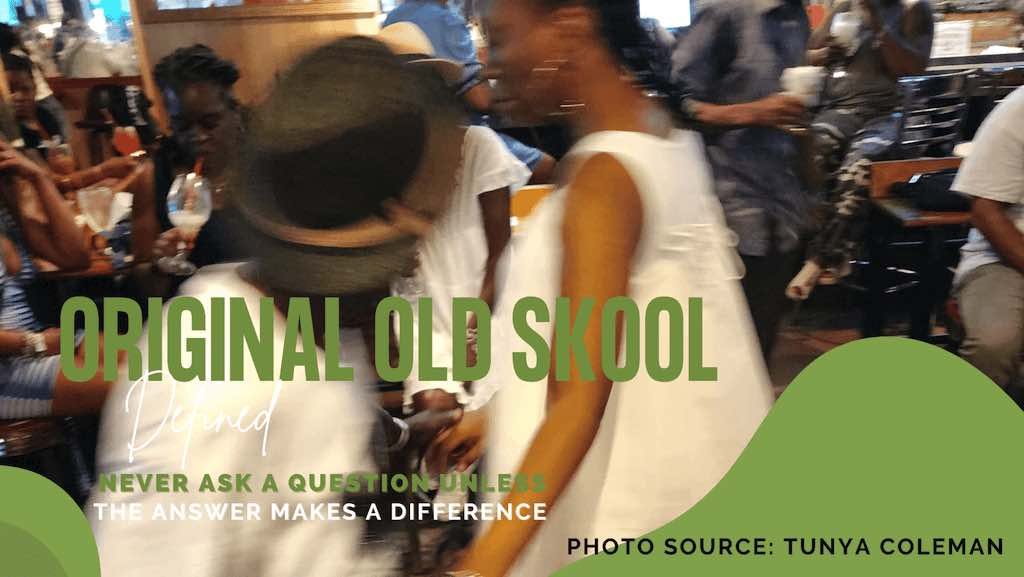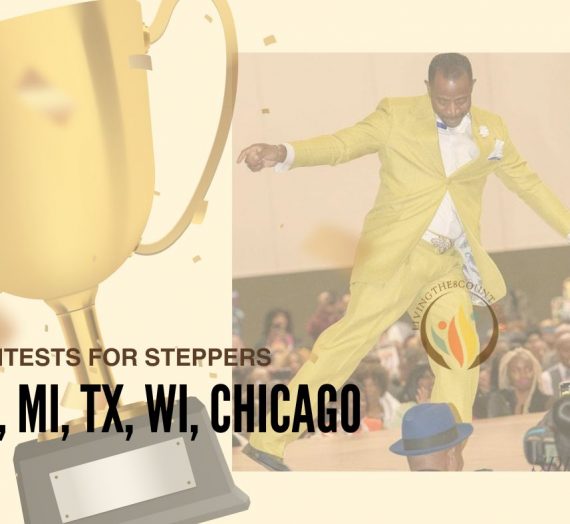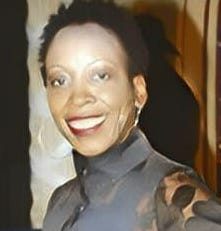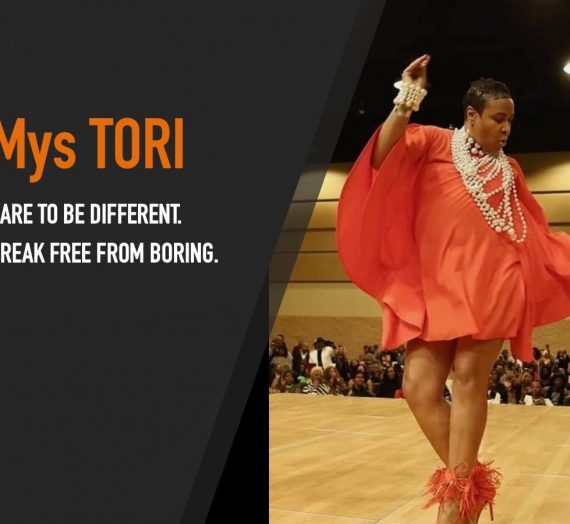Inspired by: A brief conversation with Mzlucki Banks
Chicago, “the Mecca,” sets the protocol for stepping. If anyone wants to know what Old Skool Stepping looks like, it should be clear when we watch contestants dancing in Chicago for the World’s Largest Steppers Competition. After the Last Chance Prelims in Chicago on Wednesday, July 24, many questions from steppers trailed the WLSC Prelims, particularly surrounding the “Old Skool” category.
- Is there more than one style of Stepping showing up as Old Skool?
- Why do some of the couples in the Old Skool category dance like the contestants in New Skool?
- What exactly does Original Old Skool look like?
Seeing Old Skool Versus Describing What It Is
Controversy and conversation around what is Old Skool Stepping has been a topic for a long time. When I see a couple dancing Old Skool on the Steppers set, I can pick them out from the crowd in seconds. However, it is still difficult for me to articulate in words to anyone exactly what Old Skool is and what it should look like. In WLSC 2018, I entered the Old Skool category, and in my Prelim video recording, I heard several clear comments in the background from the crowd, “That’s not Old Skool. They aren’t dancing Old Skool.”
From the contest perspective, contestants and the audience should know what Old Skool looks like so that steppers show up in the right category, choose the right music, and are judged fairly without easily being disqualified. We do not want to confuse anyone watching the WLSC, and steppers learning want to understand the dance. This conversation is not about comparing Old Skool to New Skool but focuses on defining the basic tenets of what we should look for in the WLSC Old Skool category.
Finding a Definition for Old Skool
Seeking answers, I reached out to people who grew up in the Original era, some instructors, some contestants, and younger steppers with an Old Skool style of dance. I had three questions:
- What visual elements make a dance Old Skool?
- Does “The Get Down/Freestyle/Man on Man” belong in a different category?
- How can we judge beginners on Old Skool qualifications when they are taught mostly by New Skool instructors?
Six people gave me answers and a little bit more, each in their own way – Pharies Henderson, Charlsie Hylick, Lisa Alexander, Lloyd Johnson, Ramon “Quake” Darnell, and Josiah Burt.
Pharies Henderson
Original Old Skool Stepping showcases a lot of footwork, but it is not all about footwork. There is a persona and attitude that was a part of the format. We called it a “gangsta persona” that projected, I’m the coldest. Look at Leeana Miles when she dances. You also see this when Ice Ray dances or George Macaroni (RIP) got on the wood. There are sometimes elements of high stepping. All elements of the dance worked together and synchronized. We didn’t have to pause for women to do footwork. Everything flowed in unison, working as one.
Old Skool has basic turns instead of the theatrical and acrobatic turns you see now on the set. The function and focus have become elaborate turns and carousels. We did spins and turns when we were younger, but we’re older now, so you don’t see many of us doing that in Old Skool. However, we had magical, clean turns. The dance was with hands and feet. It was also sensual and not sexual. When we danced, we performed, and people watching were seeing something.
Charlsie Hylick
It’s the music. In the Original, the dance goes with the music. The tempo can switch between doing a bop, James Brown music dancing from the waist down with footwork and high stepping. It is not a routine, and I can switch up depending on who I am dancing with. It should not be called Old Skool. This is Original Stepping. Yes, the New Skool category started from freestyle when people started doing splits, turns, and other theatrics in the contest. Freestyle was new back then. In the late 1990s and early 2000s, New Skool added many more spins and was introduced by Andre Blackwell and Tykmann. It seems mashed up today because New Skool is beginning to do more footwork. Freestyle started years ago. It’s no longer new.
Lisa Alexander
It starts with a foundation. You see a free-flowing style where you are dancing to instruments, music, and lyrics of the song. It looks natural. Back in the day, they were spinning. Think about Spinning Benny, Taboo, and Lil Alfred (RIP). Not a lot of dancers were spinning like you see today, only a few. Old Skool Original Stepping exhibits hands, feet, footwork, and dancing, with not a lot of spins and includes turns.
Newer dancers learn on a count and look like they are moving on a count. As you solidify the foundation, you get rid of the count and go from stepping to dancing. First, you learn the foundation. And when you have a solid foundation, you start playing around with what you learn from your Original foundation and layer on your own style and personality. Then it becomes new.
Lloyd Johnson
Old Skool Original consists of footwork, hand movement, minimum turns, and overall creativity.
Ramon “Quake” Darnell
When you look at Old Skool, the couple dances in a box and stays in the lane. In New Skool instruction, there are some choreographed rules. You hear to “come back home,” or there are certain setups taught for combos, turns, and misdirections. In Old Skool, there is more intentional guidance in the lead’s hands for where the partner should go instead of choreographed moves and setups. They say, “Back in the day, everybody looked different. In New Skool, everybody looks the same.” Tabu, Tony Dow, and Ty Skippy (RIP) dance differently with unique styles but have the same foundation. It’s all Original Old Skool.
Back in the day, different styles were based on the different places we came from – 79th, Jeffrey Manor, Robert Taylor, the Westside, and other places. Our styles distinguished us; everyone had their own flow and style to set them apart. Freestyle was really the Original before Old School. Everybody tried to be cool, but we did spins and turns when we were ready to turn it up a notch. You should have seen Womack (RIP), Black Fred Astaire (RIP), and Spinning Benny.
Josiah
We are all Stepping. Based on a contest perspective, Original Old Skool Stepping is based on footwork in the lead and follow separation and coming back together, not a bunch of turns. Old Skool is dancing in unison and not fighting against each other. I noticed in the prelims for the WLSC Original Old Skool category this year, every couple but one came with more footwork. Contestant couples infused footwork from Old Skool with still more turns and spins from New Skool. It’s unclear and becomes a free for all when the contest category qualifications tell contestants what they cannot do instead of what they must do.
Freestyle is not a category. Once you learn the foundation and start to apply your own skillset and styling on top of the foundation you’ve learned, that is freestyling from the dance system. I grew up in the Original era with basic steps and a format. Old Skool was New Skool in its beginning stages. New Skool showed up when Andre Blackwell and Tykmann traveled across the country. There were many turns and spins, and the dance got weaker.
More Questions and Some Old Skool Suggestions
Of course, I peppered everyone with new questions in between the answers and learned some other things. Then I had even more questions and came to some of my own conclusions:
- Regardless of who taught you, the elements described here are what judges may be looking for from contestants’ performances in Old Skool. This is a difficult category to judge and has more restrictions than New Skool. Based on the latest WLSC rules I have seen, “the Original Old Skool Category will be judged by dancers with 25 Years of experience or more.” I think these judges will view Old Skool in a manner that corresponds with the answers here. There were common themes across everyone’s answers – not just the need for footwork.
- Should the WLSC rename the Old Skool category as Original so steppers understand why and how the styles of dance showcased by Celeste and Lloyd Johnson and Scorpio and Roxie fit in the same category as the styles showcased by Krystal and Lendy Holmes and Tabitha Hicks and Jamie Graham?
- I have seen the term “Original New Skool.” on some WLSC programs. It confuses me. Does it confuse anyone else?
- Contestants in the Beginners category should get very familiar with Old Skool. Regardless of how your dance looks today, if you were taught Stepping in the right way, you started from the Original foundation – the basic format for the dance – and this makes sense that Beginners are judged by the Old Skool category qualifications too.
- I think whoever wrote the WLSC contestant rules was smart to focus on distinguishing one category from another instead of making hard and fast rules to abide by for each category. The contest rules can stand the test of time and evolution. The WLSC has been around for more than 30 years with practically the same rules. The loose interpretation of the contest rules does not suffocate creativity and change.
Other Interesting Points I Learned About Original Old Skool
- Most newer dancers today are not learning or experiencing stepping for the first time until their mid-30s to 40s now. It’s different than learning in high school or younger days like most of the Originals did when they were 12, 13, 14, or younger. The Originals were nimbler, younger, and more creative in their era when they started learning to step. There was nothing Old about the dance when they started. There is nothing new under the sun.
- In Old Skool, there is no wrong or right in Stepping. If you made a mistake, you turned it into something else. A week later, you might see it as a new move on the set that everyone else is doing or trying to learn. If you don’t do it exactly the same as someone else teaches today, it’s wrong.
- If we were to map it all out, there are so many versions of this dance. This is one dance with different variations.
Stepping is one dance outside of the contest arena – not New Skool or Old Skool. We all want to play and be creative in Stepping, or it ain’t Stepping. Be sure to learn a solid foundation first. Freedom for creativity in the dance keeps it enjoyable and fun, but we must keep it identifiable with the foundation. Let’s bridge the gap and stick together in the dance. The world is watching. I hope this helps anyone competing in the WLSC. Visit the WLSC page on StepintheChi.org for the full contestant list and other contest details.
Contestants for WLSC 2023
Old Skool Category
- Lendy Holmes & Krystal Holmes
- Lloyd Johnson & Celeste Sutton
- Michael Wentworth & Cee Sea
- Muhammad Somadhi & Debra Goode
- Pearline Wilson & Adonis
- Rich Jackson & Hanaie Swain
- Royce Banks & Jittaun Priest
- Scorpio & Roxie McKinney
- Tabitha Hicks & Jamie Graham
- Tori Robinson & Charlsie Hylick
- Vicky Murray & Kamaal Sadeeq
- Zakar Ali & Vicki Henning
- Stuart Clarke & Candace Hayden
Beginners Category
- Anjanae Wilson & Corey Marshall
- Audi Fortaine & Robert Walker
- Cassandra Guy & Johnny Higgins
- Chris A.J. Sims & Shey Draw
- Darnell Smith & Vernetta Burrage
- Tavares Donaldson & Jozette Smith
Worlds Largest Steppers Competition Rules
Beginners
Beginners should have less than 2 ½ years of total dance time. The steppers in this category are judged on the Old Skool Original rules. The judges for this category will be the Original Old Skool judges, so plan your dance accordingly.
Emphasis For Beginners Will Be Placed On: (1) Timing and coordination, (2) Synchronization with a partner, (3) Mastering basic turns and basic footwork, (4) The initial development and/or foundation of a unique style
Original Old Skool
Original Steppers should be masters of all the basic elements of the dance. This category will emphasize fancy footwork, pulling the female dance partner in close while Steppin, and overall style and rhythm. Turns are accepted, but dips and drops will result in deductions in this category. Timing, Style, Footwork, Close Dancing, and Slow Bopping are all elements of original style dancing. Routines will be frowned upon in the Original Category. The Original Category will be judged by dancers with 25 Years of experience or more, so structure your dance accordingly.
Subscribe to Chicago Stepping News by eMail from Sonji

Welcome! I am the writer Sonji Stewart. These are my travel stories about my Chicago Stepping experiences, traveling from city to city to dance. I hope my stories encourage you to join me in the adventure.
Get the latest blog post by email because every stepper should be on this email list.
By clicking submit, you accept our terms & conditions. We do not share or sell your personal information.





Andrew Allen
Dances should be judged by how long the contestants have been dancing all categories are dancing the same dance in two styles Bop and Freestyle coming together they’re called Steppin; Bopping is smooth flowing repetitive pattern of 8Steps placing two dance partners in continuous syncopation with each other they do not change this form from beginning until the end of the dance.
Freestyle is an eccentric dance a hop jig style dance with footwork that consists of hopping kicking and shuffling of feet with a heavy focus on the beat of the music in my opinion when these two dances are presented together in a contest they both look like a fish out of water